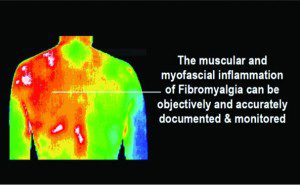By Yollo Wellness
 The symptoms may be vague at first – aching joints, weakness or fatigue. They might recede for a while, but then chest pain, mouth sores or other more specific signs emerge.
The symptoms may be vague at first – aching joints, weakness or fatigue. They might recede for a while, but then chest pain, mouth sores or other more specific signs emerge.
The issue could be an autoimmune disease, a category of more than 80 conditions in which the immune system goes haywire and attacks the body’s own tissues.
Estimates on the exact number of Americans grappling with autoimmune disease range from 24 million to 50 million, but medical professionals and researchers do agree that the ailments are far more prevalent in women. Ninety percent of people with lupus, for instance, are women.
Getting a diagnosis for autoimmune disease often feels like following a meandering path. Many patients spend nearly four years and see at least four physicians before receiving answers, according to survey results from the American Autoimmune Related Diseases Association Inc.
At YOLLO Wellness, we use Medical DITI , a noninvasive adjunctive diagnostic technique that allows the examiner to visualize and quantify changes in skin surface temperature. An infrared scanning device is used to convert infrared radiation emitted from the skin surface into electrical impulses that are visualized in color on a monitor. This visual image graphically maps the body temperature and is referred to as a thermogram. The spectrum of colors indicate an increase or decrease in the amount of infrared radiation being emitted from the body surface. Since there is a high degree of thermal symmetry in the normal body, subtle abnormal temperature asymmetry’s can be easily identified.
Medical DITI’s major clinical value is in its high sensitivity to pathology in the vascular, muscular, neural and skeletal systems and as such can contribute to the pathogenesis and diagnosis made by the clinician.
Medical DITI has been used extensively in human medicine in the U.S.A., Europe and Asia for the past 20 years. Until now, cumbersome equipment has hampered its diagnostic and economic viability. Current state of the art PC based IR technology designed specifically for clinical application has changed all this.
Skin blood flow is under the control of the sympathetic nervous system. In normal people there is a symmetrical dermal pattern which is consistent and reproducible for any individual. This is recorded in precise detail with a temperature sensitivity of 0.01°C by DITI.
The neuro-thermography application of DITI measures the somatic component of the sympathetic nervous system by assessing dermal blood flow. The sympathetic nervous system is stimulated at the same anatomical location as its sensory counterpart and produces a ‘somato sympathetic response’. The somato sympathetic response appears on DITI as a localized area of altered temperature with specific features for each anatomical lesion.
The mean temperature differential in peripheral nerve injury is 1.5°C. In sympathetic dysfunction’s (RSD / SMP / CRPS) temperature differentials ranging from 1° C to 10° C depending on severity are not uncommon. Rheumatologically processes generally appear as ‘hot areas’ with increased temperature patterns. The pathology is generally an inflammatory process, i.e. synovitis of joints and tendon sheaths, epicondylitis, capsular and muscle injuries, etc.
Both hot and cold responses may co-exist if the pain associated with an inflammatory focus excites an increase in sympathetic activity. Also, vascular conditions are readily demonstrated by DITI including Raynauds, Vasculitis, Limb Ischemia, DVT, etc. DITI is helpful in monitoring thermal abnormalities present in health problems such as fibromyalgia and thyroid dysfunction, even when all thyroid levels are within normal levels in a patient’s blood work.
A pattern of hypothermia (cool areas) over T1/T2 (the first and second thoracic vertebrae) in a thermogram indicates autoimmune dysfunction, but cannot determine if there is hypothyroidism or hyperthyroidism. This pattern, often seen in patients that also suffer from symptoms of fibromyalgia and chronic fatigue syndrome, is helpful in confirming a suspected diagnosis and monitoring a patient’s response to treatment. As the patient improves and the body returns to more normal thermal symmetry, the hypothermic pattern will be reduced. Conversely, if the patient is not responding to treatment or is regressing, the pattern will either remain the same or the temperature differentials will increase and the pattern will become more pronounced.
Medical DITI is filling the gap in clinical diagnosis
. X ray, C.T. Ultrasound and M.R.I. etc., are tests of anatomy.
. E.M.G. is a test of motor physiology.
. DITI is unique in its capability to show physiological change and metabolic processes. It has also proven to be a very useful complementary procedure to other diagnostic modalities.
Unlike most diagnostic modalities DITI is noninvasive. It is a very sensitive and reliable means of graphically mapping and displaying skin surface temperature. With DITI you can diagnosis, evaluate, monitor and document a large number of injuries and conditions, including soft tissue injuries and sensory/autonomic nerve fiber dysfunction.
Medical DITI can offer considerable financial savings by avoiding the need for more expensive investigations.
Medical DITI can graphically display the very subjective feeling of pain by objectively displaying the changes in skin surface temperature that accompany pain states.
Medical DITI can show a combined effect of the autonomic nervous system and the vascular system, down to capillary dysfunctions. The effects of these changes show as asymmetry’s in temperature distribution on the surface of the body.
Medical DITI is a monitor of thermal abnormalities present in a number of diseases and physical injuries. It is used as an aid for diagnosis and prognosis, as well as therapy follow up and rehabilitation monitoring, within clinical fields that include Rheumatology, neurology, physiotherapy, sports medicine, oncology, pediatrics, orthopedics and many others.
Results obtained with medical DITI systems are totally objective and show excellent correlation with other diagnostic tests.
Wendy Law, Deb Bost, Rodney Law and Amber Law are level II thermographes certified by the American College of Clinical Thermology.
YOLLO Wellness offers an autoimmune/pain protocol using a combination of hyperbaric oxygen therapy, inflammatory food/other agent blood testing, micronutrient blood testing which formulates into an individualized program just for you.
Hyperbaric in office use, in home rentals and sales.
Now offering Pristine Micro foods from Wakaya Island in Fiji. Certified Organic and grown in volcanic ash. Turmeric boast 5.96% curcumin and the Ginger is 3% higher in gingerol. FREE Samples!
YOLLO Wellness
3840 Colonial Blvd, Suite 2, Ft. Myers, FL 33966
(239)275.0039
www.YOLLOWELLNESS.com









